If you were living in 1918 and saw a newspaper story about the murder of the Romanovs, would you have known who they were? How would you have felt about the news if you read it when it first broke?
Thanks to numerous books, plays, movies, and mini-series, most people today are familiar with the story of the Romanovs, the Russian royal family headed by Czar Nicholas II who were brutally executed in 1918, ending the country’s monarchy.
But that’s today. What about back then?
We headed to the historical newspapers on Newspapers.com to help us find out how people living in the United States and Canada at the time of the Romanov executions would have experienced the news of their deaths.
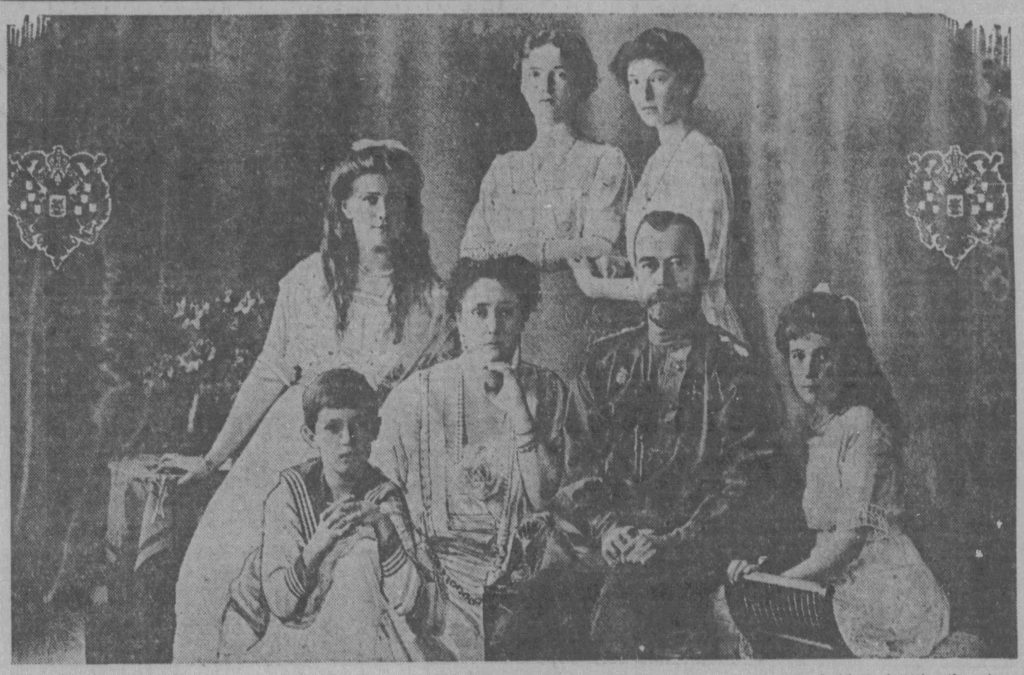
Would people living in the U.S. and Canada have known who the Romanovs were?
While we can’t speak for everyone living in those countries at the time, it’s pretty safe to say that if you were a newspaper reader, you would have known who the Romanovs were.
Since Russia was a world power, its monarch naturally drew the attention of newspapers. People could read about Nicholas II’s personal life, from his marriage, to the births of his children, to his visits to foreign royalty. And they likewise could read about Russian politics under his rule, from the Russo-Japanese War, to civil unrest and revolution, to World War I.
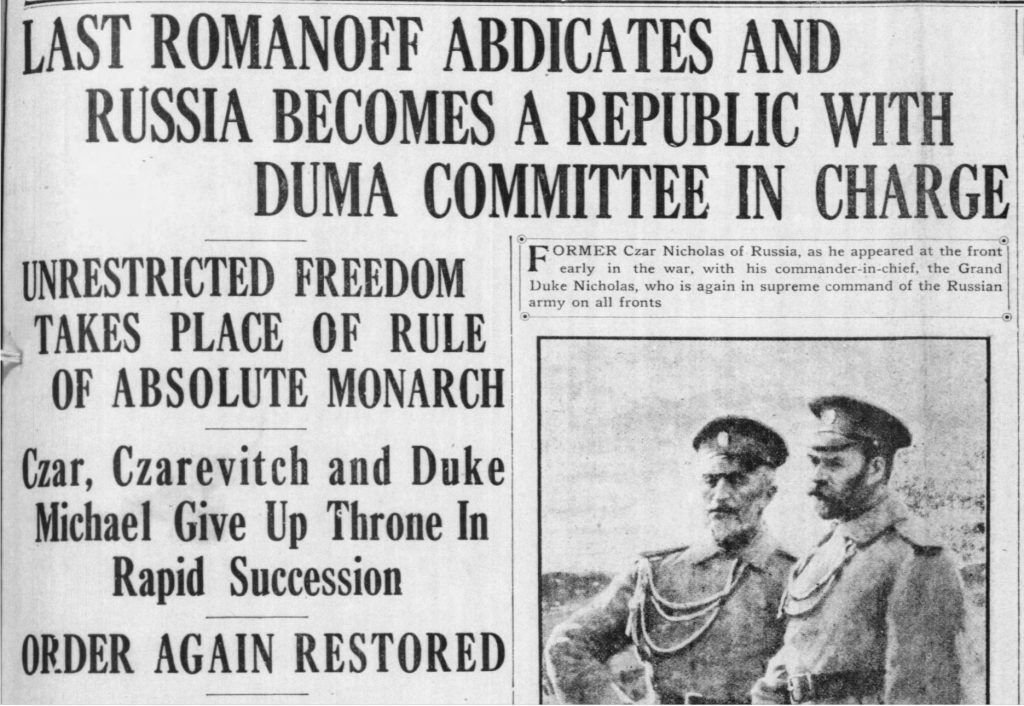
There was fairly consistent newspaper coverage of the Romanovs throughout the years of Nicholas II’s reign, with the exception of a few years that had major spikes in coverage. The first was 1905, an eventful year in Russian politics headlined by a revolution attempt and Nicholas’s issuing of the October Manifesto (which promised an elected parliament).
The other two years that saw spikes in newspaper coverage of the Romanovs were 1917, when Nicholas II abdicated and was exiled, and 1918, when the family was executed. The abundance of newspaper coverage about the executions is probably self-explanatory, but the Romanovs’ lives in exile prior to their deaths seemed to fascinate newspapers almost as much.
How did Americans and Canadians back then feel about the Romanovs?
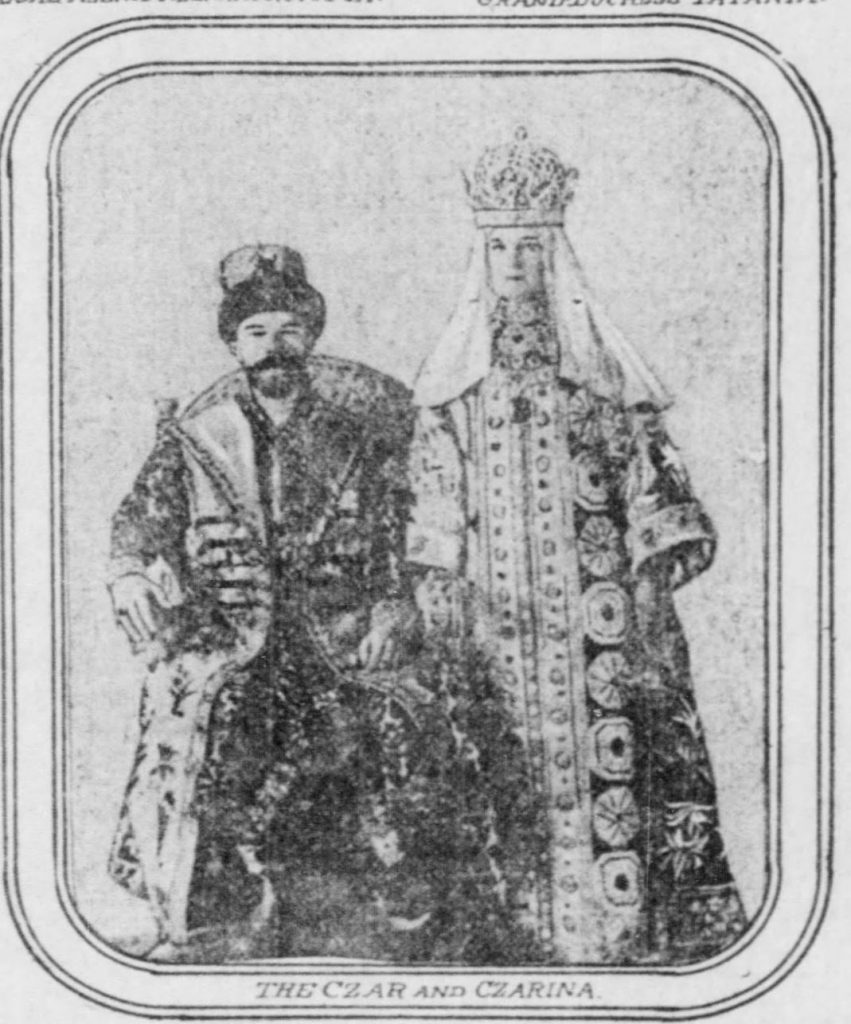
Most people likely formed their opinions about the Romanovs based on newspaper stories—the main source of news at the time. So a look at how newspapers were portraying the Romanovs can help us understand how they would have been seen by the general public in the U.S. and Canada.
Nicholas was often portrayed by the American and Canadian press as an inept, weak ruler who was easily influenced by those around him. The more negative portrayals showed him as an arrogant, superstitious despot who cared nothing for the people he ruled, overly dependent on his wife and on incompetent advisors. The more positive portrayals, however, often wrote about him as a quiet family man who had the misfortune of being born into a role he wasn’t suited for.
As for his wife, Alexandra, the more flattering depictions portrayed her as an intelligent and spiritually-minded woman who was a loving wife and mother. The negative newspaper accounts tended to show her as a pro-German sympathizer who controlled her husband and was unhealthily obsessed with mysticism.
As for the children—4 daughters and a son—newspapers paid the most attention to Alexei (Alexis), the long-awaited male heir. Although the royal family tried to keep Alexei’s hemophilia a secret, rumors of the boy’s poor health still made it into the American and Canadian media. This in turn led to articles predicting that Alexei’s likely early death would spell the end for the Romanov dynasty.
Did people know about Rasputin?
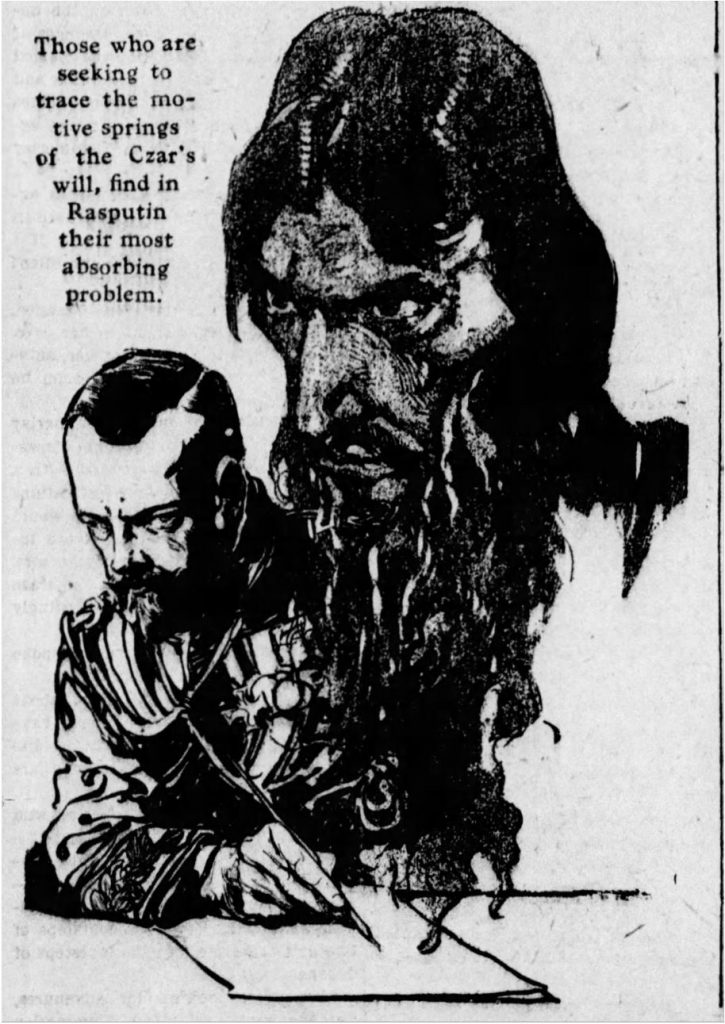
Yes. Rasputin was a controversial, scandalous figure, and controversies and scandals have always been popular news items. News about Rasputin seemed to have taken a few years to reach the U.S. and Canada (he joined the Russian court around 1905, yet didn’t begin appearing in Western newspapers until about 1911). But once he became known in North America, he was a figure of fascination, and his mystical power over Alexandra and Nicholas was widely written about both before and after his murder in 1916.
How much did people in 1918 know about the deaths of the Romanovs?
Not much—at least, not much accurate information. Because so much was kept secret by the Bolsheviks, news of the Romanovs’ deaths left Russia slowly, and the details that were reported were often far from what we now understand to have happened. This lack of concrete news opened the gates for a flood of rumors and unsubstantiated news.
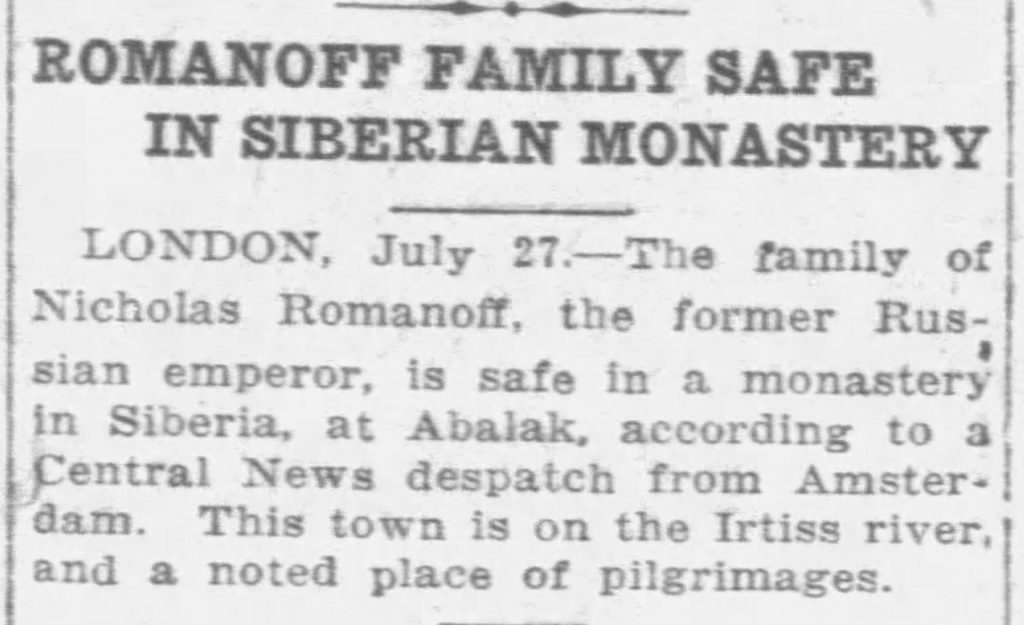
Most initial reports indicated that while Nicholas had been killed, his family was still alive—which we now know was not true. Another oft-published item from around that time claimed that Alexei had died from exposure a few days after Nicholas’s murder—also incorrect. Fictitious accounts of Nicholas’s execution also circulated widely in newspapers, as did a plethora of tell-all articles of dubious veracity written by people claiming to have been connected to the royal family. To top it off, every few months articles would crop up claiming that there was a chance Nicholas was still alive.
There were so many conflicting accounts about what happened that even when a somewhat accurate account was published, there was no way for newspaper readers to be able to discern that this particular article was any more or less true than the numerous others.
The mystery of what really happened to the Romanovs lasted for decades, until the discovery of their bodies was made public in 1989. Even today, there are still things we don’t know about the Romanovs’ deaths, but one thing’s for certain: We know much, much more than people did in 1918.
Search Newspapers.com for more articles about the Romanovs. And follow us on Facebook, Twitter, and Instagram for more interesting historical content like this!
Like this post? Try one of these!

